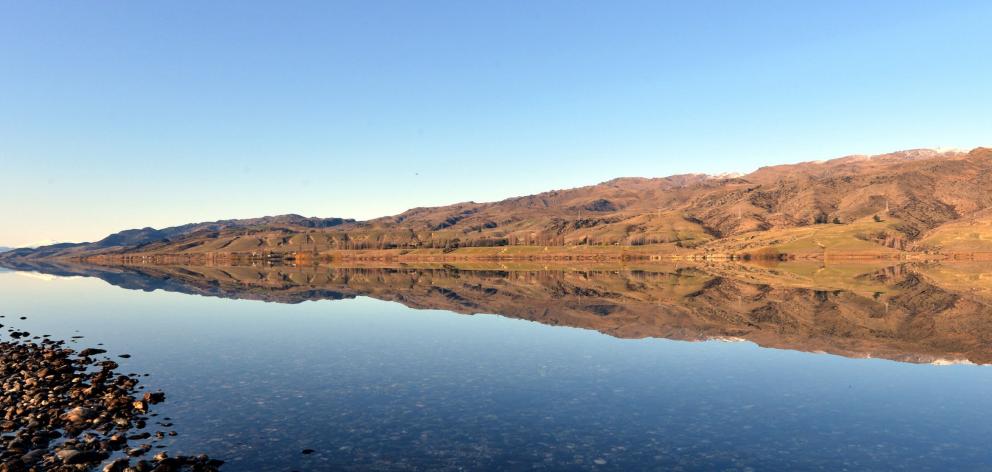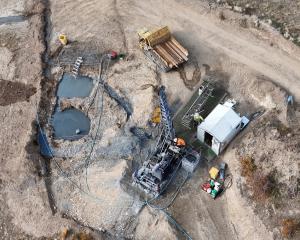
Forsyth Barr broker Damian Foster tells business editor Dene Mackenzie milk processor Synlait is building an electricity-powered boiler in affirmation of the sector’s long-term positive demand outlook.
Wholesale electricity prices surged in June. Prices at Otahuhu averaged $106 a megawatt hour (Mwh), 71% higher than in May due to falling hydro storage.
National hydro storage levels had fallen 21% in June to 104% of average. Electricity demand was up 3.2% on the previous corresponding period.
Forsyth Barr broker Damian Foster said most of the generator-retailers (gentailers) would have done well in June, with the exception of Contact.
South Island hydro storage was well below average at present, meaning Contact faced a tough start to the 2019 financial year.
''We are positive on the long-term demand outlook for the sector, which revolves around the decarbonisation of transport and industrial processes.
''In a significant symbolic move, Synlait has announced it will not build any more coal-fired boilers and that it is building a small 3MW electrode boiler.''
Synlait said it would not build any new coal boilers.
In June, the market had also been reminded generation plants were fallible. Contact had both of its gas-peakers unavailable for June due to the need for unforeseen repairs, reducing spare capacity in the system, he said.
Genesis returned Tekapo B to service at the beginning of June after a seven-month outage.
During July, all of the gentailers would report their operating statistics, providing a strong indication of their full-year earnings prospects. Based on the June performance, there were earnings upside risks for both Mercury and Meridian, Mr Foster said.
In late June, both the Electricity Authority (EA) and the Electricity Price Review (EPR) released updates on their respective regulatory processes.
The authority had ''kicked the transmission pricing methodology ball further down the field''. The authority had not changed its thinking and a new consultation document was not due until 2019, he said.
The EPR update indicated the first issues paper would be released in late August.
Indications were of a heavy focus on fairness and equity.
The Expert Advisory Panel was working towards an issues paper to go to Energy Minister Megan Woods in August and a public document was expected to be released by the end of next month.
The panel noted the broad remit of the EPR and would be focusing on some areas more than others as a result.
The aim of the issues paper would be to flag areas requiring further investigation, Mr Foster said.
One area appearing likely to be looked at in more detail was affordability. The export panel had noted some consumers were genuinely unable to afford such basics as heating their homes.
''It will be interesting to see where the expert panel lands on this as arguably it is a general poverty issue as opposed to an electricity price issue. Increased home insulation requirements are a likely outcome.''
So far, the price review appeared to be tracking as expected, Mr Foster said.
Nothing in the update from the expert panel appeared to go down the ''central buyer'' route touted before the 2014 election.
Forsyth Barr maintained its view the price review would come up with recommendations impacting on who pays for what as opposed to a fundamental rethink of the wholesale electricity market.
In Carl Hansen's final week as chief executive of the Electricity Authority, the EA released an update on the transmission pricing methodology.
In short, progress had been slow to non-existent, Mr Foster said.
The EA was still working on a new proposal and consultation document it was likely to publish in 2019, two years after it went back to the drawing board after material flaws were found in its cost benefit analysis.
It still favoured a benefit-based charter that would be retrospective for some major upgrades to the transmission system. Costs associated with past grid upgrades in the upper North Island would be sheeted home to upper North Island consumers as opposed to being spread throughout the country, he said.
That particular issue was the genesis of New Zealand First's dislike of the proposed pricing methodology and politicisation of the pricing methodology was a key factor facing the Electricity Price Review.
The EA also favoured Cook Strait cable costs being shared between South Island generators and North Island consumers.
At present, only South Island generators paid for the Cook Strait link. Meridian Energy, in particular, had an annual bill of $100 million for the link. The new proposal was expected to be positive for Meridian.












